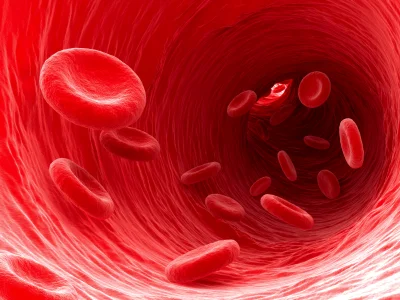Pregnancy is a time full of anticipation and moving moments. The feeling of happiness is great - and sometimes so is the uncertainty. Particularly with your first child, it is not yet clear what is in store for you as a pregnant woman and which examinations you would like to have for yourself and your unborn child. The examinations aim to monitor the health of the expectant mothers and the development of the child in order to detect risks at an early stage.
One of these possible prenatal examinations is the NIPT - a non-invasive prenatal test.
What is a non-invasive prenatal test (NIPT)?
The non-invasive prenatal test examines whether the child’s genetic material shows changes, so-called chromosomal disorders, which could affect the child. For this purpose, cell-free DNA of the unborn child circulating in the mother’s bloodstream and delivered by the maternal placenta is analyzed. Because this test does not require any intervention in the uterus, it is referred to as “non-invasive” (non-invasive). It is important to know that only genetic changes are examined with a NIPT. The test cannot detect whether the unborn child is healthy overall. Even if almost all children see the light of day healthy.
At what point in a pregnancy can a NIPT be performed?
The NIPT can be performed at an early stage of pregnancy, depending on the test provider already from the completed 9th or 10th week of pregnancy. During pregnancy, the placenta releases fragments of the child’s genetic material into the mother’s bloodstream. By the end of the 9th/10th week of pregnancy, this amount is usually sufficient to be analyzed
What changes in the genetic material can the NIPT detect?
The tests have various examination options with different scopes of examination, between which you can freely choose as a pregnant woman.The offer of the individual providers can vary. One of the first NIPT tests to be launched in Switzerland is the PraenaTest®. It is still very popular today and offers various testing options:
- Trisomy 21 (Down syndrome)
- Trisomy 18 (Edwards syndrome)
- Trisomy 13 (Pätau syndrome)
- Maldistribution of X/Y sex chromosomes (Turner, Triple X, Klinefelter and XYY syndromes)
- 22q11.2 microdeletion (DiGeorge syndrome)
- Rare maldistributions of all other chromosomes (monosomies and trisomies) With this plus option, ll 22 chromosomes are examined for possible impairments
Just a few steps to the result – the NIPT examination procedure
The tests are performed according to the latest standards of technology and only a few steps are required to obtain the test results
- Comprehensive consultation and information from your doctor
First, your doctor will provide you with comprehensive and open-ended advice and will conduct an educational discussion with you.After you have agreed to the genetic test, the next step takes place - Simple blood collection
A small amount of blood is taken from your arm vein - Blood analysis in the laboratory
The blood sample is given to a laboratory where analysis takes place within a few days - Test result
After the analysis is completed, the test result is sent to your doctor, who will discuss it with you
Is a non-invasive prenatal test safe for mother and child and what about test accuracy
There is no risk of miscarriage with NIPT. Since the NIPT can detect chromosomal defects of the child or the placenta solely via a blood sample, neither the pregnant woman nor the child is exposed to any risk. The non-invasive prenatal tests are therefore completely safe for the unborn child and the expectant mother and also have a high test accuracy. They determine with a high degree of certainty whether or not one of the chromosomal abnormalities under investigation is present. Some changes have only a few effects on the child, while others can cause mental and physical limitations.
The detection rate and accuracy of the non-invasive prenatal tests have already been proven in various clinical studies. With a test accuracy of over 99%, NIPT combines the advantages of alternative screening tests without risks to the child. In rare cases, the genetic information of the placenta and the child differ. This can lead to a false test result, but this only occurs in about 0.1% of cases. Therefore, in case of a positive result, professional societies recommend to check it with a further examination
There are also limitations to the investigative methods of noninvasive prenatal testing.
Certain special forms of chromosomal defects, for example structural changes in the chromosomes or mosaics, cannot be detected. In structural chromosomal defects, a piece of a chromosome is missing, a piece is supernumerary or has been incorrectly “inserted” into the chromosome. In a mosaic, cells of a tissue or the whole organism of the embryo carry different genetic information. All this can lead to incorrect results, although this is extremely rare.
For most parents, a NIPT helps to alleviate their worries and fears about possible health problems in their child.











